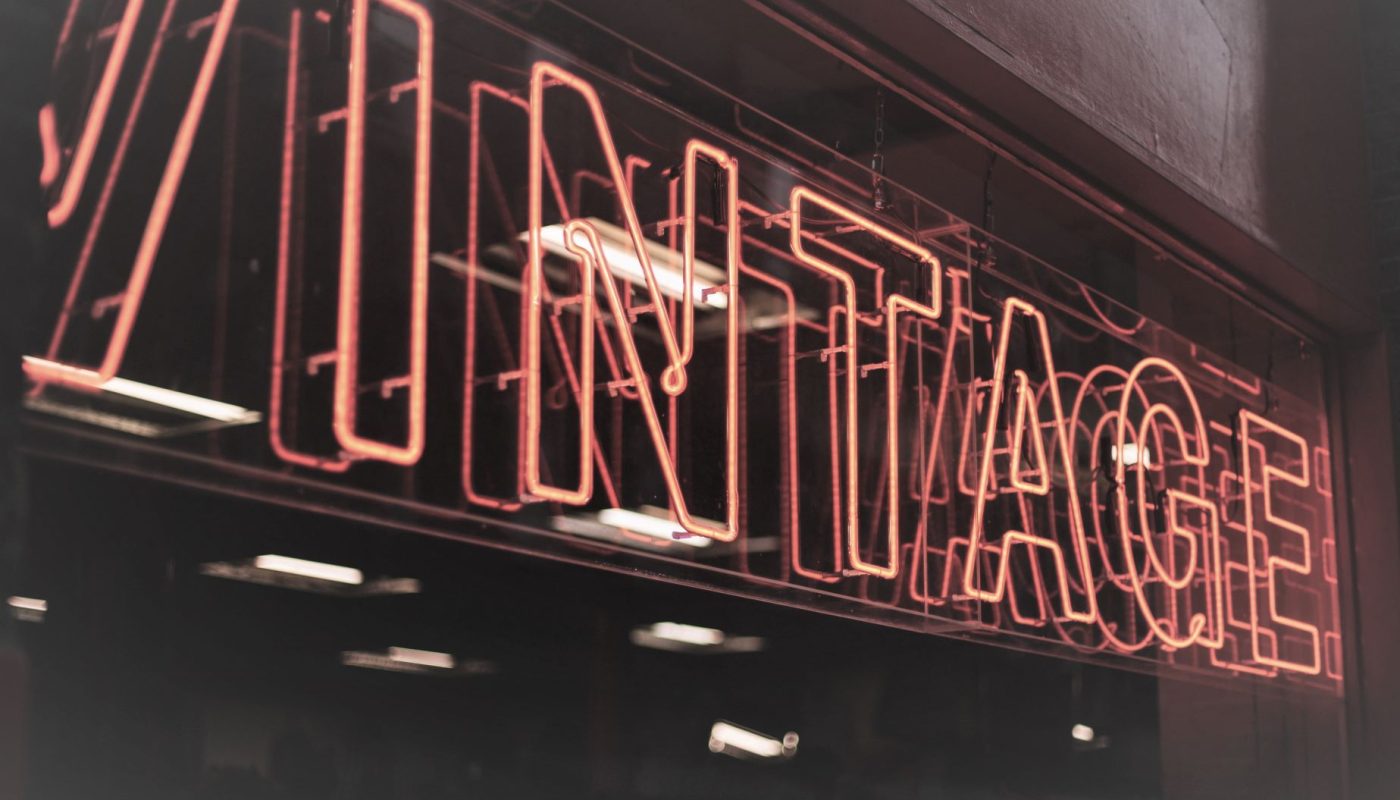I am pretty sure each of us had in our hand’s vintage clothes. Some love them, collecting, hunting for the best shops, pieces and proudly wear them. Others do not share the same sentiments, style or desire to wear old and already used clothes. Nevertheless, vintage clothing is one of the most environmentally and budget-friendly way to shop and support the circular economy. For the last years, the popularity of vintage clothes has grown dramatically due to the conscious consumerism movement, vintage design incorporation and mix with new trends and ever-increasing popularity of resale platforms such as Vestiaire Collective, Depop, Poshmark or Asos Marketplace.
If you are new to vintage clothing or would like to try your luck by scoring a real gem, I prepared the list of vintage cloth identifiers. Let’s start with some terminology and clarify what is what according to the fashion industry. Don’t forget to check Kilo Sale Pop-Up Store Video down below!
Vintage – by industry standards, clothes must be at least 20 years old. We are in 2021, so everything before 2001 can be identified as a vintage piece!
Antique – items that represent a previous historical era and at least 100-year-old.
Retro – cloth or things that try to imitate the specific style of the past but can be made in current times.
Is it genuinely Vintage?
First thing first, check the tag
- If you can recognize the brand, but it is in their old logo, or you can not recognize it, it is most likely a vintage piece.
- If the tag contains a union symbol, “one size fits all” label, city name on the brand label, extra-large price tags with original price or made in countries that no longer exist, such as Yugoslavia, the garment can be called vintage.
- Tags with exaggerated embellishment and rounded typography were trendy in the 60s.
- Care tags were not required to add until the 70s. If the cloth does not have such instructions, it is most likely were bade before that time.
- Half sizes were widely used between the 40s and 70s.
- RN and LOT numbers on the tag (used in the US). RN number is an abbreviation for Registered Identification Number used by companies who import, distribute or manufacture textile, wool or fur articles. LOT number used to track the garments from the factory as no digital inventory/recording system existed.
- Unusual garment materials such as Dacron Polyester, Vycran, Acrilan mainly were used before the 70s.
Cloth construction can tell not just if the item is vintage but also precisely the era, for example:
- If the cloth does not have tags or seams, it does not look remarkably straight and robust it is indications of handmade clothing. Handmade clothes were trendy between the 50s and 70s as it was a big part of acknowledging feminine values and adapting to the family budget and economic circumstances.
- Only metal zippers were used before 1963. The zipper placement on the side (woman dress) is most likely from the 40s, and the zipper in the middle of the back is from the 50s.
- French seem to provide a professional and clean look used up to 40s and a zig-zag trim with pinking shears widely used in 50s. Serged an overlock stitch came into fashion in the 60s and most commonly used until today as a very secure and crisp finish.
- Cloth before the 70s most likely have no lining because woman used to wear slips.
I hope this list will help you feel more comfortable and confident when buying vintage clothes. Most importantly, I wish to have a lot of fun by mixing, matching, trying and experimenting with vintage clothes! Stay Healthy, Happy and See You Soon!
https://youtu.be/1Jswm1CfQCc


